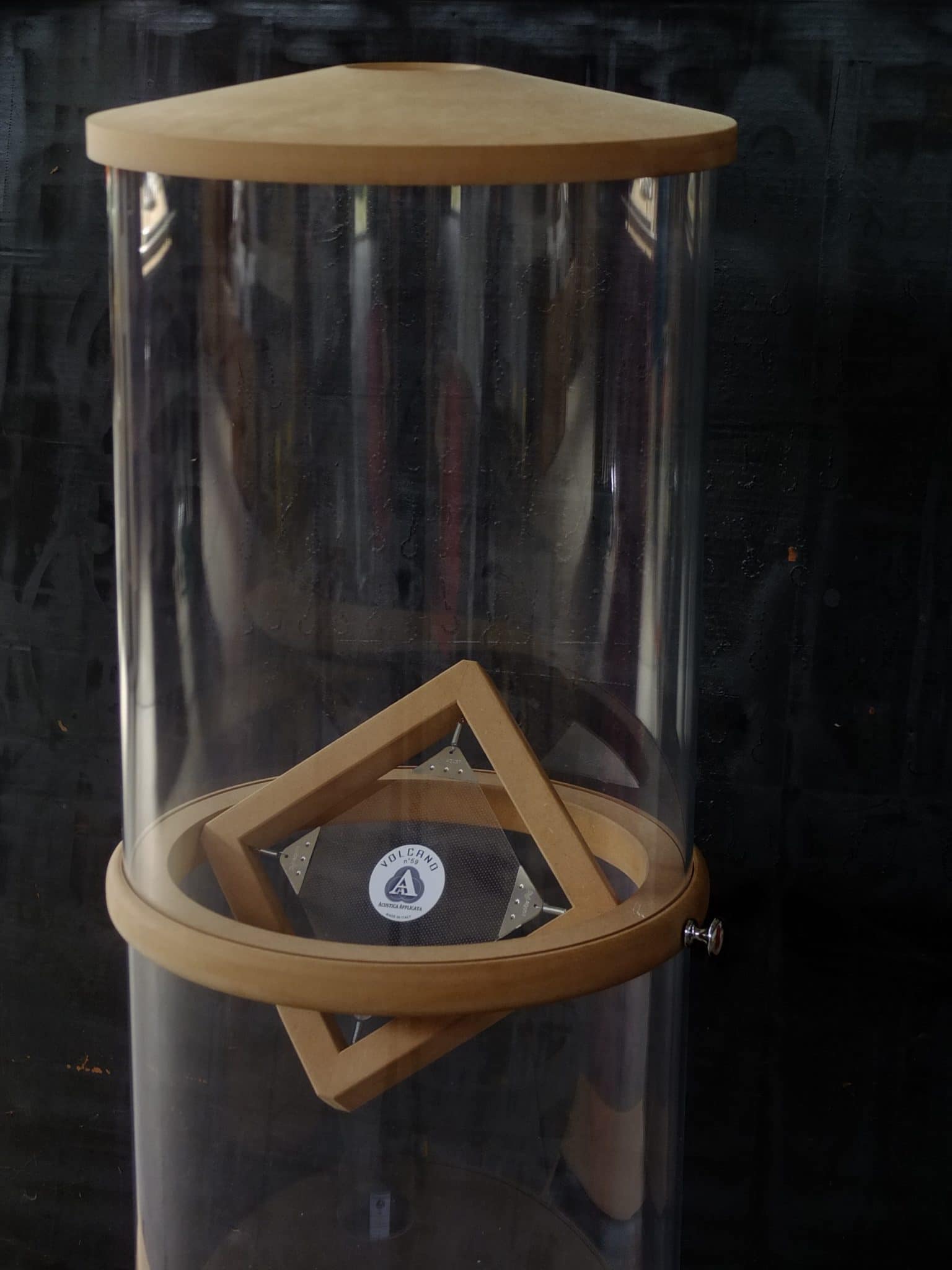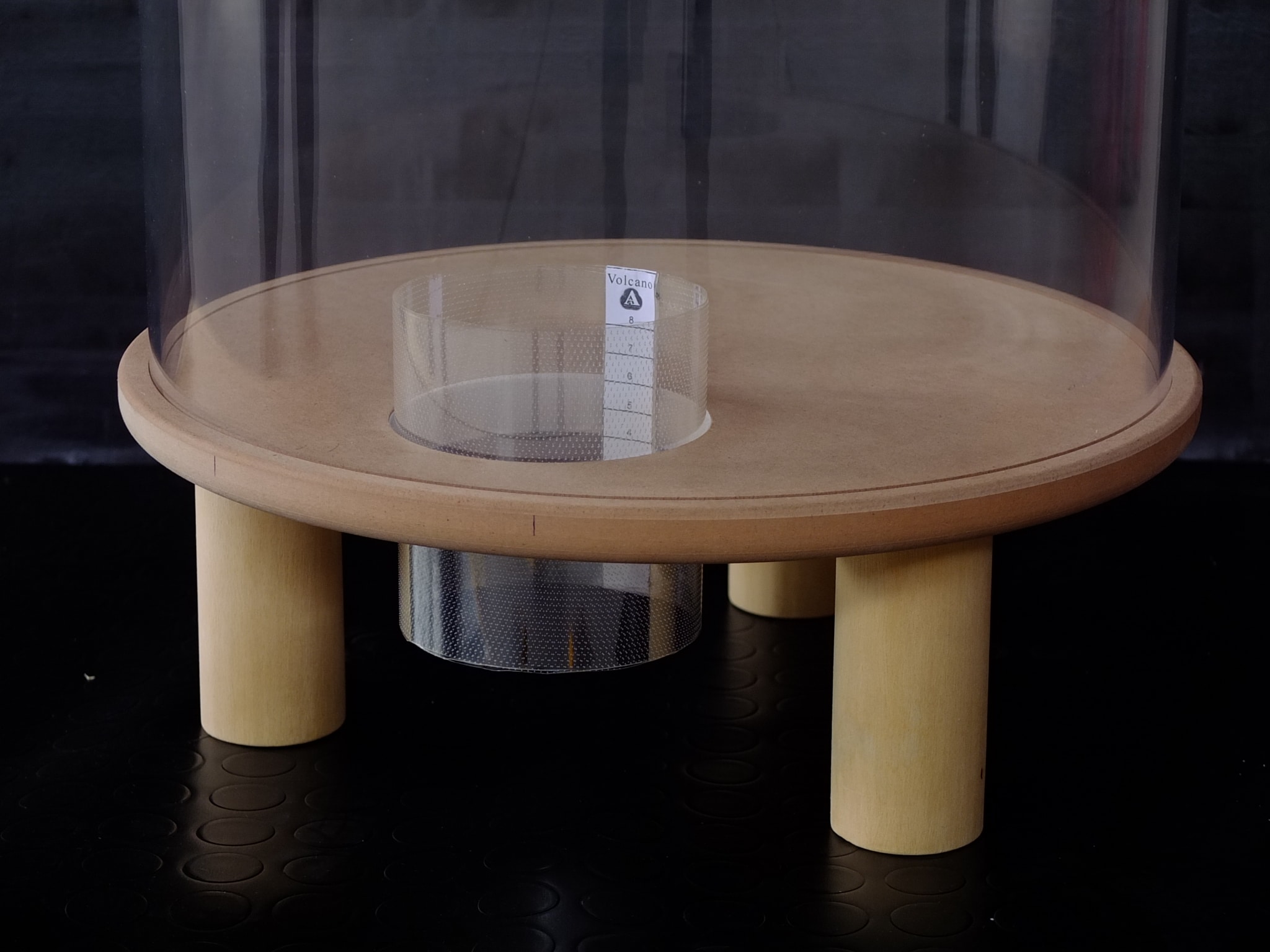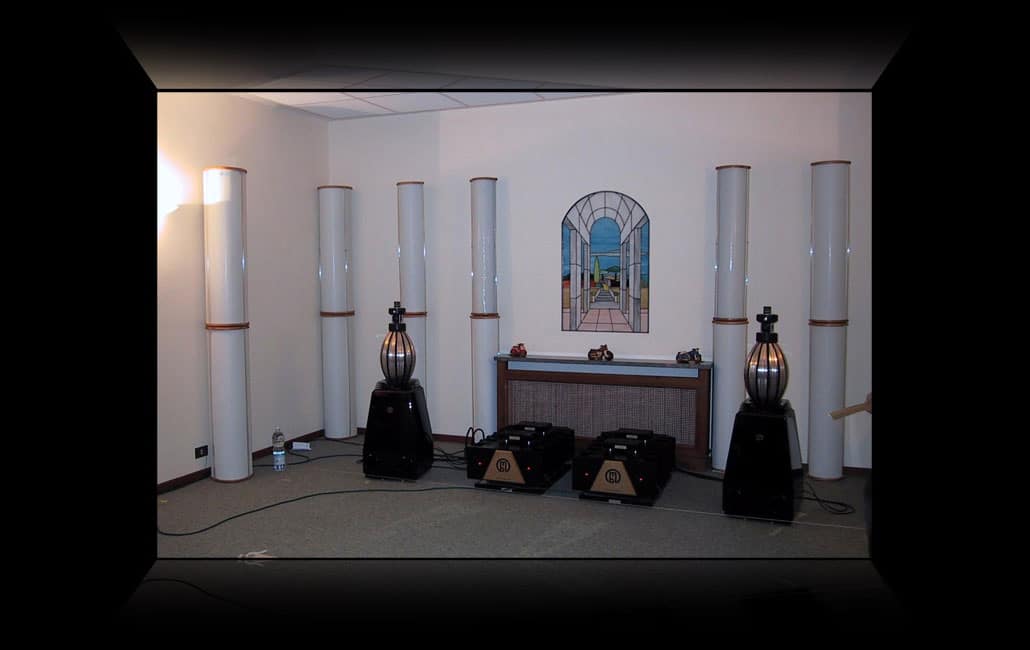The Article
Acustica Applicata’s Volcano: a variable resonator
12th September 2016
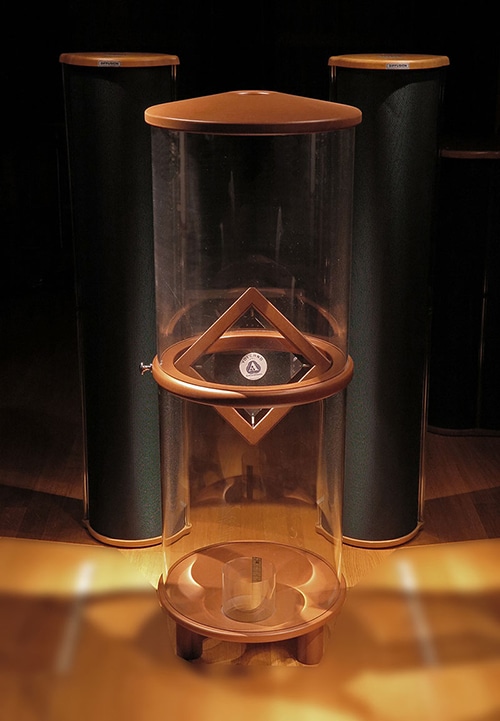
A unique application to be used as a part of a wider room treatment, Paul Rigby reviews the mighty…Volcano!
Is it a giant cookie jar? Or maybe a bird feeder for an Ostrich? Not quite, it is, in fact, just one part of Acustica Applicata’s array of room treatment tools. You will be familiar with the sort of thing I’m taking about, I’m sure. You may have seen similar attempts in music studios, which have been adapted for home use. You’ve probably familiar with egg-box designs fitted to walls, free-standing monoliths, Toblerone-shaped blocks running along the base of a wall and so on.
Acustica Applicata is doing the same thing but approaching the problem of the wayward resonances bouncing around your hi-fi room in a rather different way and with a unique sense of style to boot.
Based on the principle of the company’s Polifemo, the narrow band Helmholz resonator but without the iris, the Volcano is shorter than the Polifemo and can be applied to a variety of room positions where specific bass energy concentrates. But the principal application is between the loudspeakers, in the same plane or just behind them. This position is where complex energy turbulences occur and the Volcano, according to the company, is the first acoustic device ever designed to specifically treat this area.
As the company explained, “Just imagine dropping two spheres into a rectangular swimming pool where your speakers are positioned. The waves emanating from this disturbance flow outwards at 360 degrees and crash into one another creating turbulences. Further turbulences are caused by the waves hitting the sides and reflected back into the pool. A very complex situation of turbulences quickly builds up. And this is one simple wave pattern. Music in a room is much more complex and multiple frequencies are involved, so energy peaks build up, cancellations occur… It very quickly become extremely chaotic.”
The Volcano has a fixed port in the top and a further port in the bottom that is height adjustable to tune it to the required bass frequency. In the middle of the Volcano is a membrane stretched within a wooden frame which can be orientated from vertical to a horizontal position by an external knob. The membrane is made of a special acoustic material. By angling this membrane, it is possible to adjust the high frequencies.
The standard Volcano is made from transparent Plexiglas with ends made from shaped MDF. The base has a port of 10.5cm diameter into which is a cylinder made from a flexible acrylic. There is a scale on the cylinder that allows you to raise and lower it with accuracy during listening tests.
The standard Volcano comes in two parts that are fitted together easily. No fixing or gluing is required. Where excess bass energy problems are encountered, especially at lower frequencies, an additional centre piece can be purchased and fitted to increase the height from 102 cm to 144.5 cm. This centre section (42.5 cm high) can be added at the time of purchase or retro-fitted easily at a later stage.
The Volcano is the latest in the family of variable resonators developed and manufactured exclusively by Acustica Applicata. It is the new entry level model in the family that includes the Polifemo and Phemo, designed to improve the sound of your hi-fi.
In many ways, this is not really a truly fair review because, in normal circumstances, you would use this unit in conjunction with its sister units to treat all the aspects of the room as a whole. That said, to my knowledge, the Volcano has never been tested in isolation before so it was an ideal opportunity to see just was this singular construction actually does, on its own, without anything else affecting it.
SOUND QUALITY
I began with the high energy vibes of Frank Zappa’s Wind up Workin’ in a Gas Station from Zoot Allures. I listened to this track for some time, over and over and then brought in the Volcano and played the track yet again. Was there a difference? Yes, there was. Initially, from a first impression, the difference lay in the bass, which sounded sharp, with nailed on transients. The bass started and stopped on a button which added to the impact and punch of the same. Right after that, though, I noticed the harmonic parts of the vocal kicked in with an extra clarity. A ‘clean’, open effect.
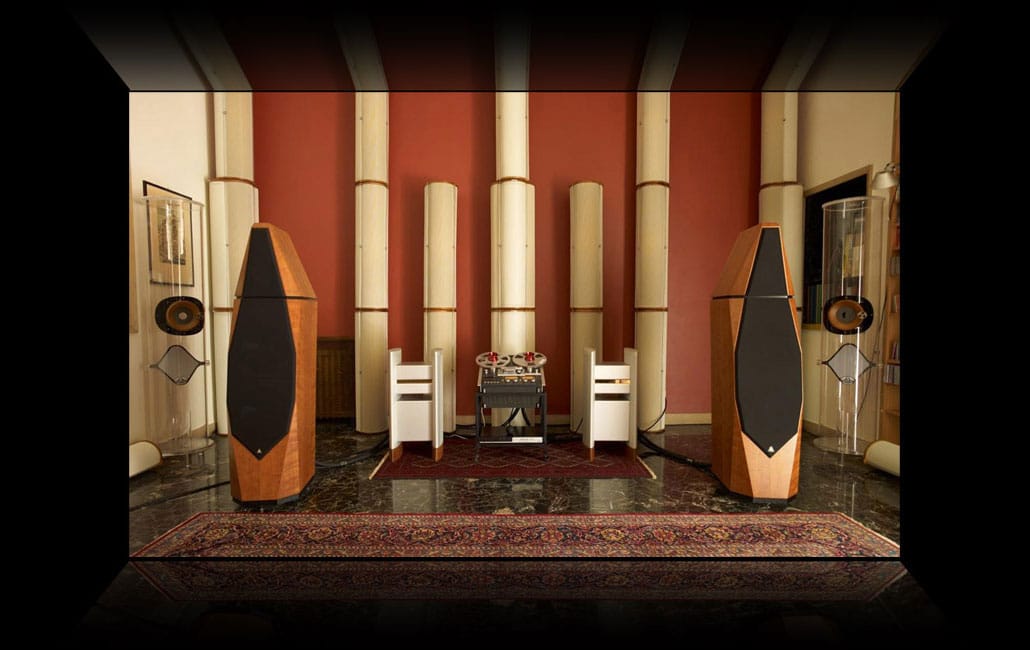
I then picked up the Volcano and heaved it out of the room and listened again…and again…and again. In and out of the room this thing went for an hour. For that time, I resembled a furniture removal man, not a hifi reviewer. Every time the Volcano left or entered the room, though, I could hear this distinct change in both bass and the mids. The effect was uncanny.
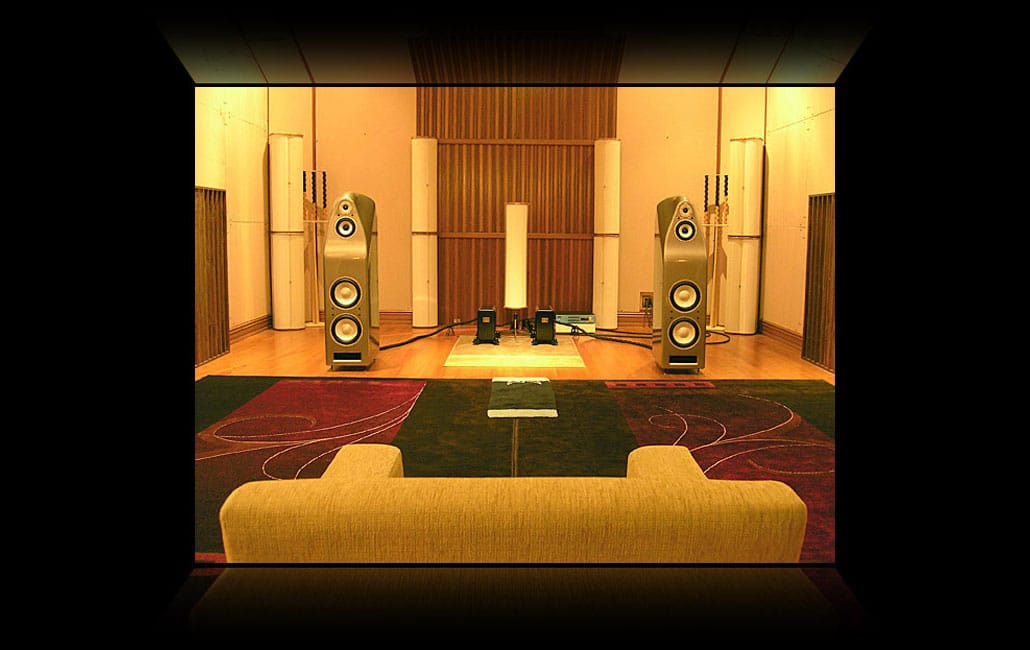
Now I’ve heard the effect that treatment panels can have on a room, so I wasn’t surprised but the unique aspect of the Volcano design is that the unit is tweakable. That is, it can be altered to suit your room. Fine tuned, if you will.
The first thing to tweak was the internally-fitted, diamond-shaped membrane-in-a-frame, fixed half way down the tube. I decided to go for extremes to see what it did to the sound, if anything. With the diamond in a flat, horizontal position, the sound was warming my room, a bit wooly, with softened bass and dreamy vocals. Fully open? The upper mids were rather forward and slightly strident while the guitar crescendos provided a slightly bright aspect. I found that, for my system, a 20 degree position was an ideal ‘half way house’ that returned those excellent degrees of midrange clarity and transparency.
Next? Frank Sinatra’s Got the World on a String and I reached for that odd, flexible little pipe at the bottom of the Volcano’s chassis tube. This was particularly intriguing because it seemed to extend the lower bass, the further down the pipe physically fell. Hence, pulling the pipe as far down as it could go, almost touching the floor, the bass became cavernous, massive and strong in its aspect but rather dominating. The further up it went, the sprightly, bouncier and more agile that bass became, eventually resulting in a ping pong bass that was too unbalanced the other way. Again, you need to find your own level on this one, depending on your room shape and size. I’m going for 6 out of the 8 positions (see the illustration above to view the simple setting options) but I might tweak this later. In that position, bass was strong, massive yet dextrous and full of impact.
One final ‘tweak’ was that I pushed the unit about a foot backwards so that the unit was not level with the speakers. I found that this position gave the sound an unwelcome edge in terms of slightly aggressive mids so I returned the unit back from whence it came.
CONCLUSION
Any conclusions have to be drawn with the knowledge that they are not really complete. That is, you wouldn’t really want to buy this unit in isolation, if you were treating your room, hence the slightly guarded rating which does not reflect upon the quality of the product but does reflect that the Volcano is but one part of the larger toolkit. The reason for this review was to see if the Volcano actually did anything in isolation and that answer is certainly ‘yes’. As such, it should be used as a major part of any room treatment system. If nothing else, the Volcano shows you just how complex the essence of reflected sound is and the effects that these reflections have on the ear. The sooner we remember that we are not just playing the hi-fi but also playing the room itself, the better.
ACUSTICA APPLICATA VOLCANO
Tel: 0118 981 9891
Web: www.audioconsultants.co.uk
Prices:
Standard Volcano is £930
Additional Centre Module is £390
GOOD: clean mids, precise bass, tonal change tweaks, unique design
BAD: works best in conjunction with other room treatment components

